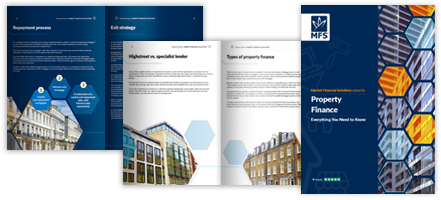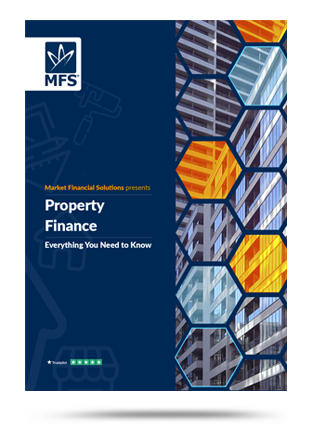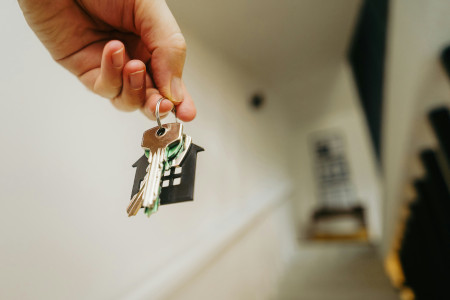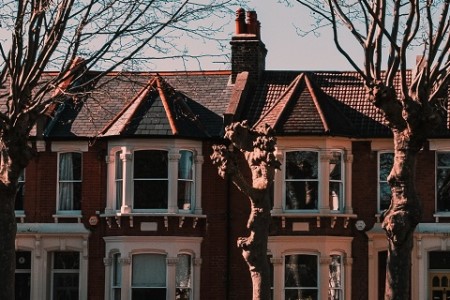Market Financial Solutions are a bridging loan and buy-to-let mortgage provider and are not legal, financial, investment or tax advisers. This document is for informational purposes only and does not, and should not be considered, to constitute legal, financial, investment or tax advice or be relied upon by any person to make a legal, financial, investment or tax decision. Therefore, Investors are encouraged to seek appropriate professional advice. The information in this content is correct at time of writing.

How to buy an abandoned house is a frequently asked question in the property industry. There is plenty of demand for getting empty or derelict property back on the market, given the current severe lack of supply. For prospective buyers and renters, an increase in housing stock would add balance to an overly competitive industry. At the same time, bringing abandoned properties back to life could hold attractive renovation opportunities for investors.
1. Know what an abandoned house is
An abandoned property is a home or building that’s empty and in a bad state of repair. This is usually the result of the property not having been lived in for a long time. There are nearly 700,000 homes in England that are unfurnished and standing empty, with over 265,000 of these are classed as “long-term empty[1]”.
Given the chronic undersupply of housing in the country, making better use of empty properties is a logical place to start. In fact, our research from October 2021 showed that 52% of Britons considered the housing shortage to be one of the country’s most pressing social issues. Yet only 15% thought they would see the problem solved in their lifetime. Further, just 30% were confident that they will one day live in their own home. These percentages may have only risen since then, considering our ongoing housing crisis[2].
2. Find an abandoned house for sale
Fortunately for investors looking to buy an abandoned house with potential, there are many ways to hunt them down. The biggest online players can offer opportunities for buyers. Websites such as propertytorenovate.co.uk[3] will feature derelict or renovation projects with great potential, while Zoopla has been known to list properties valued at £10,000 or less[4]. Abandoned homes can also often turn up in auction houses, so it’s worth keeping an eye on what lots are on the horizon.
For those needing a bit more help with the leg work, there are sites entirely dedicated to finding abandoned property and guiding the purchasing process. An obvious example includes derelictpropertyforsale.co.uk[5].
Local authorities can also be contacted for details on any unregistered properties in their area. If investors have a specific location in mind, they may be able to simply drive around the area to find abandoned or run-down houses. If one is found, they can then start making enquiries on who the current owner is. Buyers may have better luck finding derelict and/or abandoned properties in rural countryside areas, as opposed to densely populated cities.
→ Learn more about financing an abandoned house with our Complete Property Finance Guide.
3. Find out who owns it
Finding out who owns an abandoned property can be tricky, especially where homes have been left empty for months, or even years on end. Initially speaking with locals in the area may help narrow down the search.
Fortunately, most derelict properties in England and Wales should be registered with HM Land Registry. Through the Government’s website[6], investors will be able to download copies of a property’s summary, title plan and title register – the latter of which usually includes details on who owns the property and what it was last sold for.
To use this service, an email address and debit or credit card will be needed. Property summaries are free of charge, but it’ll cost £7 for title registers or plans.

4. Buy an abandoned house
Abandoned property can provide investors with lucrative opportunities, whether they’re looking to:
- Renovate and then sell-on the property
- Refurbish then rent the premises
For those wondering how to buy an abandoned house, it is worth looking to auction houses. Sellers will often list properties they’re desperate to get rid of in auctions, where they can change hands in lightning speed.
Many probate properties – that is, properties owned by someone who is deceased – are listed for sale via auction. Some might be in a poor condition, making them unsuitable for a straightforward sale or rental via the open market. More experienced investors at auction, however, could be attracted by the potential to secure the asset for a lower price.
Estate agents may also provide a surprisingly direct line to derelict properties. They’ll likely only want to highlight pristine options in their windows, but they may have some houses in need of rescuing somewhere in their books. It may be worth going in and speaking with the staff to find out what they’ve got going on behind the scenes.
Keeping an eye on land for sale may also prove worthwhile. Building land for sale will often have property on it that the seller expects buyers to demolish. These buildings may be beyond saving, but could also be salvageable.
5. Renovate your abandoned house
Renovating one of England’s abandoned homes may be more complicated than doing the same for newer buildings. Decrepit buildings may require substantial work to bring them back to life. But, given the likely scale of the work, planning permission may be required[7].
Investors will need to make sure they have all these necessary approvals in place before any renovation work starts. To find out if planning permission will be required, local authorities will need to be contacted.
Specifically – derelict properties will usually need to be modernised. Investors buying one of Britain’s abandoned homes should consider energy efficient improvements as part of the modernisation process. This is certainly true of anyone looking to hold onto the asset as a buy to let property.
For investors and landlords, renovating a derelict property is the opportune moment to also improve its energy efficiency. Here are five changes to consider:
- Install energy-efficient lighting throughout the property
- Replace an old boiler
- Add cavity wall insulation
- Add loft insulation
- Install double or triple glazing
6. Finance the renovation
Investors may consider a property refurbishment loan to finance renovation plans. This is particularly true of those who might be looking to sell the asset once the works are complete. Whether they require a loan for renovation works, to purchase of the asset itself, or both, it’s advisable to explore all financial options first.
There are many types of fast, flexible bridging loans available for those looking for short-term finance. Having the right option lined up before committing to any project involving an abandoned property is wise.
A lot of people could benefit if the UK’s derelict, vacant and run-down homes were brought back to life and put back on the market, either for sale or to let.
Investors thinking about tapping into this often-overlooked corner of the market, should first think about their financial options. Market Financial Solutions can provide buy to let bridging loans, home refurbishment loans, and loans for auction purchases. Get in touch today to find out more about our bridging options.
Summary
For investors, the focus may not just be on how to buy an abandoned house, but what needs to be done after a purchase. Derelict property can provide buyers with plenty of opportunity for those willing to roll up their sleeves. Bringing a comatose home back to life will not only present monetary returns, but can also be incredibly fulfilling.
However, there’s no getting around the fact this will take time and a lot of effort. Aside from the practical difficulties of bringing an old home into the 21st century, buyers will have to wrestle with legislative red tape. It’ll be naïve to think one can buy a run-down home for a few thousand in the spring, and then sell it on for 6 figures in the winter.
Before getting started, investors will need to make sure they have time, capital, and contacts on their side. But, where all ducks are in a row, abandoned homes could be real diamonds in the rough.
The Complete Guide to
Property Finance
Everything you need to know
- Foundation & different finance types
- Useful tools
- Apply them in real life
- Market insights & more
[1] https://www.actiononemptyhomes.org/
[2] https://www.ft.com/content/4dac2611-6d93-44ce-ab12-036fbc687324
[3] https://propertytorenovate.co.uk/
[4] https://www.zoopla.co.uk/discover/property-news/properties-costing-10000-for-sale/
[5] https://derelictpropertyforsale.co.uk/
[6] https://www.gov.uk/search-property-information-land-registry
[7] https://www.gov.uk/planning-permission-england-wales






